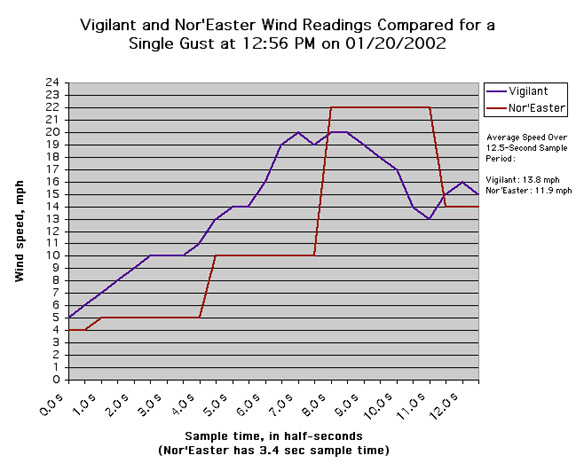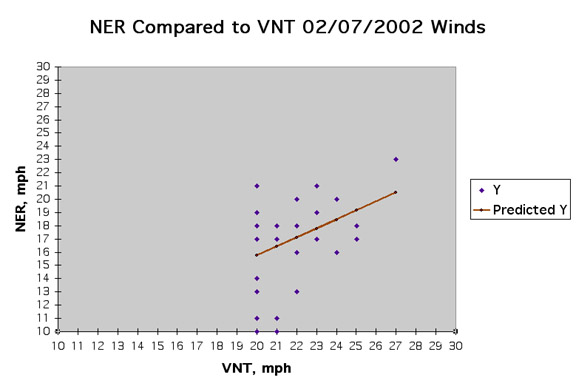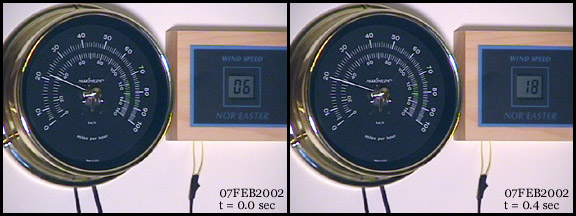Table 1 shows that the average non-rechargeable 9-volt battery lasts
about 26 days, which is close to a month. The rechargeable NiMh only lasted
three days--it appears that rechargeable batteries are not compatible
with the Nor'Easter, though this is just one sample.
To briefly digress from the Nor'Easter, I appeared to get a "bad"
battery from Energizer, with a new Super Heavy Duty only lasting 18 days
from April 27, 2002 to May 15, 2002. Aside from the one bad Energizer, there
seems to be little difference in the duration between the two big brands,
though this is still a small sample size. Interestingly, the less expensive
Fred Meyer brand appears to keep up with the big two. I'm continuing to
collect battery data for the Nor'Easter, and plan to continue posting results
on this web page.
The Nor'Easter In Summary
For those wishing to witness the highest gust possible, the Nor'Easter
is probably not a good choice, unless your location has very good wind exposure
that results in nice, steady wind runs (as opposed to turbulent runs). As
a system for calculating average wind speeds, it is good for someone on
a low budget, though difficulty can arise in making the calculation when
the same wind speed reading happens over consecutive samples. If you're
worried about the cost of batteries, the system will consume about 12 a
year, which suggests an annual cost of about $36.00, assuming an average
price of $3.00 per battery. This cost assumes that the anemometer must operate
all the time, which may not be the case.
Finally, though I was troubled with the 3.4-second sample rate in the
beginning, the Nor'Easter has grown on me as I sought to understand just
what the device was measuring. I now keep the display in the living room
for quick and easy assessment of the current wind velocity when I'm not
at my home weather lab.
The Maximum Vigilant
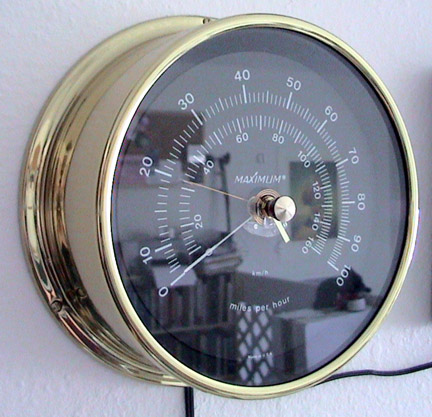
I purchased my Maximum Vigilant in January of 2002 from The Weather Store
(MA) via online ordering. It cost about $250.00. As mentioned, the system
was purchased to obtain a smooth wind readout for examination of the Nor'Easter's
3.4-second sample rate. Also, there's something inherently more interesting
about watching a needle move in response to every little change of wind.
Careful watching reveals a broad assortment of gust types, from those that
quickly lift the needle to peak velocity with a slow trail off, to surges
that gradually build, to a burst that subsequently holds nearly steady for
5 to 10 seconds, and to quick "puffs" that throw the needle up
and back down in an instant. This kind of gust character is lost to many
digital systems, and is why I prefer to have at least one analog anemometer
operating among my computerized equipment.
One thing I really like about the Vigilant is the very large dial, with
one mph increments clearly visible. I can see wind speeds down to the single
mph from across a room, and, when closer, judging even 1/2 mph increments
is possible, especially for the first 50 mph of the scale, which has wider
spacing between the one-mph tick marks. The indicator's response is quick,
leaving me feeling like it's showing the wind's myriad details in real-time.
There are a number of features about this anemometer that might be alien
to someone who's used to other makes, people like me who have the tendency
to compare new anemometers to the old Trade-Winds A-2s. Of interest are
the peak gust register and associated hammer indicator needle, and the lack
of solid readings below five mph.
The Peak Gust Register
The Maximum Vigilant and associated models such as the Maestro and Maestro
2-S have a narrow, gold needle with its tip bent down against the dial surface
to catch the broader, white indicator needle. The gold needle is the peak
gust register. During a high wind phase, the indicator needle will shove
the gust register needle toward the wind's high point. To help facilitate
this movement, the indicator needle has been designed to slightly waver
up-and-down like a little hammer to bang away at the gust register needle.
This wavering was a little disconcerting at first, as I was used to the
smooth motion of the Trade-Winds indicator. However, the bouncy pointer
on the Vigilant doesn't take long to get used to, though one is left wondering
at times just what part of the little swing is the actual wind velocity--the
down part, the up, or the middle. Of course, the variance is under one mph
on the large scale offered by the Vigilant.
Despite the hammer action, the gust register has several limitations.
The gust register isn't supposed to be set below 15 mph, to allow the
indicator needle some room to move at the low-energy end. Thus, for those
interested in taking daily peak gust records, this isn't the instrument
for the task. I encountered no mention of this 15-mph limitation from the
available literature, and was a bit disappointed once I received the Vigilant
and read the instruction book. Since I'm more interested in high wind speeds,
this displeasure wasn't major. More an irritation.
Of greater significance, the gust register adds to the overall inertia
of the indicator needle. In other words, it adds resistance to the motion
of the indicator, slowing its response to short-duration gusts. I haven't
bothered to measure the extent of the slowing in any controlled fashion
like I did the examination of the 3.4-second sample rate of the Nor'Easter.
To do so, I think I'd have to get another Vigilant, set it up as a repeater
to the other and videotape the response of one dial with the gust register
out of the way, and the other with the register in use. Having the Nor'Easter
set up as a repeater from my Vigilant has offered the opportunity to roughly
observe the limitations of the gust register. During some sustained 20 to
30 mph gusts where the indicator needle was having to shove the gust register,
the Nor'Easter sometimes showed speeds two to four mph faster. My guess
is that the disparity could be quite a bit greater at times. The most I've
ever seen a single gust push the register is about 3 mph before the wind
speed fell below the register's position. Looking at the Maximum literature,
I see a notation of the register's response rate at "75% Vv / 5 seconds".
If I'm interpreting this correctly, it seems to imply a reading about 75%
of the actual velocity over a period of five seconds. Which means that the
gust register is more a measure of sustained gust than instant gust.
As mentioned in the Nor'Easter section, the National Weather Service records
a 5-second peak gust these days, so the gust register reading is probably
more comparable to the NWS readings than a free-swinging indicator needle
showing instant bursts. Nevertheless, I like seeing the full range of each
gust. During significant wind events, I use the gust register reset knob
to move the gold needle out of the way and let the indicator have free reign
of the dial. I've witnessed brief gusts up to 45 mph that almost surely
would have made the gust register barely move had it been in the way.
No Sub 5-mph Winds
For those interested in low wind speeds--and I know a few out there--the
Vigilant isn't the anemometer for the job. There are no tick marks between
0 and 5 mph on the dial, and I take this to mean that the device isn't calibrated
for these wind speeds. I think part of the problem stems from the mechanism
that creates the indicator needle's hammering motion. At low speeds, the
needle appears to have a wider swing than at high speeds. The indicator
is especially bouncy below 5 mph, and can swing over a significant portion
of the space between the 0 and 5 mph marks. From the National Weather Service
standpoint, I think this kind of situation was in play pre-ASOS, as readings
below 3 mph/knots were sometimes indicated as estimated on the surface observation
forms. Probably another reason for the Vigilant's setup is that calibration
for the lowest wind speeds is difficult. Part of the reason for this is
that the anemometer's cups may not be sensitive enough to actually respond
to velocities of 1 or 2 mph. I think the Maximum sensors are in this category.
I've run the Maximum sensor against a Davis VantagePro, in this case having
the cups side-by-side in close proximity. The Davis sensor is clearly more
sensitive than the Maximum. When the Davis is showing 1 mph, and even 2
mph, the Maximum cups aren't even moving. Though somewhere between 2 and
3 mph there's a response in the Maximum, and the needle on the Vigilant
begins to jiggle. At 5 mph and above, both systems are in close agreement;
though, like with the Nor'Easter, the Vigilant has the edge on peak instant
gust, as the Davis has a 2.5-second sample rate. Incidentally, the Davis
and Nor'Easter read nearly the same most of the time, the mark of carefully
calibrated instruments, I'd say.
This isn't to say that the Maximum cups aren't well made. They have a
very smooth action with good response times. They appear more sensitive
than the Trade-Wind sensors that I used in the past. Indeed, I think one
to five mph readings on the Trade-Winds are quite questionable, with the
catch-up point occurring between six and ten mph.
The Vigilant in Summary
Despite some limitations, I enjoy the Maximum Vigilant, especially during
blustery days that give the indicator needle a good workout. It's also quite
a showpiece. For those wishing to keep daily peak gust records, the Vigilant's
gust register isn't quite up to the job, and the 15-mph-plus readings that
it does record are most likely peak sustained gust as opposed to peak instant
gust. The Vigilant also doesn't reliably indicate wind speeds below 5 mph.
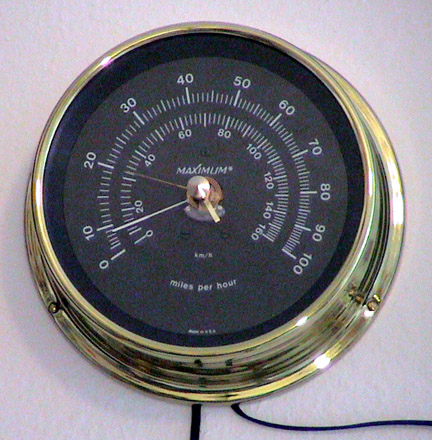
Maximum Anemometers: Some Final Notes
Maximum offers a five-year warranty on all their equipment. I think this
is indicative of very reliable high-quality instruments. My Nor'Easter and
Vigilant have worked flawlessly since I put them into service, despite long
heat waves, cold snaps, many-day-long Columbia Gorge wind events with east
gusts of 20 to 35 mph, and so on. Other respected weather instrument companies,
like Davis, do not offer a warranty of the duration of Maximum's, typically
having coverage for only one year. Though a long warranty isn't everything,
it's something to keep in mind when looking for a new anemometer or other
meteorological device. |
